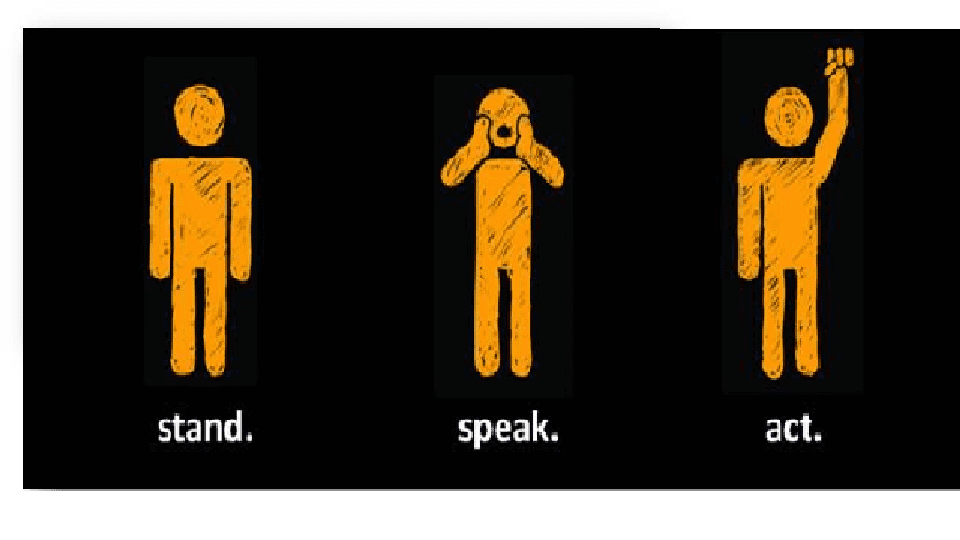When do you stand up, and how?

Who takes the brunt of verbal and physical assault in public places? Immigrant women. Black and brown women, women in general.
According to the New York Police Department, bias incidents in New York spiked 400 percent in the two weeks that followed the election of Donald J. Trump, compared to the same period the previous year. The Southern Poverty Law Center, an advocacy organization that tracks hate incidents and provides tolerance training in schools, has released a report that stated that bias incidents surpassed the 1,000 mark between the election of Donald Trump and January 1, 2017. The vast majority of these incidents were directed towards immigrant women.
Even though Mr. Trump has left office, incidents against non-Aryan White people (sometimes called non-Nordic people) continue to occur throughout the country.
Stand up!
 As a Jewish woman, raised in New York, bluntness comes naturally to me. Support for the common good is in my Jewish DNA; we call it “Tikkun Olam” (healing what is broken in the world).
As a Jewish woman, raised in New York, bluntness comes naturally to me. Support for the common good is in my Jewish DNA; we call it “Tikkun Olam” (healing what is broken in the world).
Here’s my first attempt at it. I am running bystander intervention classes. I launched in the winter of 2017 and ran them until the pandemic shut down in-person classes.
What is Bystander Intervention?
Bystander Intervention is a strategy to prevent or lessen the impact of social violence, including bullying, sexual harassment, sexual assault, and intimate partner violence.
A bystander is a witness.
- If you see someone drop their garbage on the sidewalk, you are a bystander to littering. You have the option to speak up.
- If a friend in your car is starts yelling profanity at someone, you are a bystander to verbal assault. You have the option to speak up.
- If you see someone in the room speaking abusively to someone else, you are a bystander to verbal abuse. You have the option to speak up.
It is awkward to be the “trash police” or the “civility police” with people we know. It is intimidating to contemplate doing so with strangers. But it can be done, and it must be done. By being silent, you communicate that you accept this behavior.
The aim of training is to prepare people of good intention for situations like this. With preparation, you are less likely to freeze when you see someone being targeted. There are better and worse interventions; practice can arm you with better ones.
There are many ways to be part of the solution
Not all active bystanders take a speaking part. There are many support roles that are more suitable for people with more reserved personalities.
- Minding the bags/possessions of the person intervening.
- Videoing the interaction.
- Watching the interaction (some people will behave better once they realize that everyone is watching).
- Standing in the way between people yelling at one another, or standing near the person who is being yelled at.
Safety first
There are more and less safe ways to defuse a hostile interaction, I offer a class in verbal self defense as a recommended pre-requisite to learning how to be an active bystander. Then, in the active bystander class, we get up, move around and learn how to provide the most safety possible for a target of abuse.
About Bystander Intervention classes. Want to know about future classes? Join the mailing list.